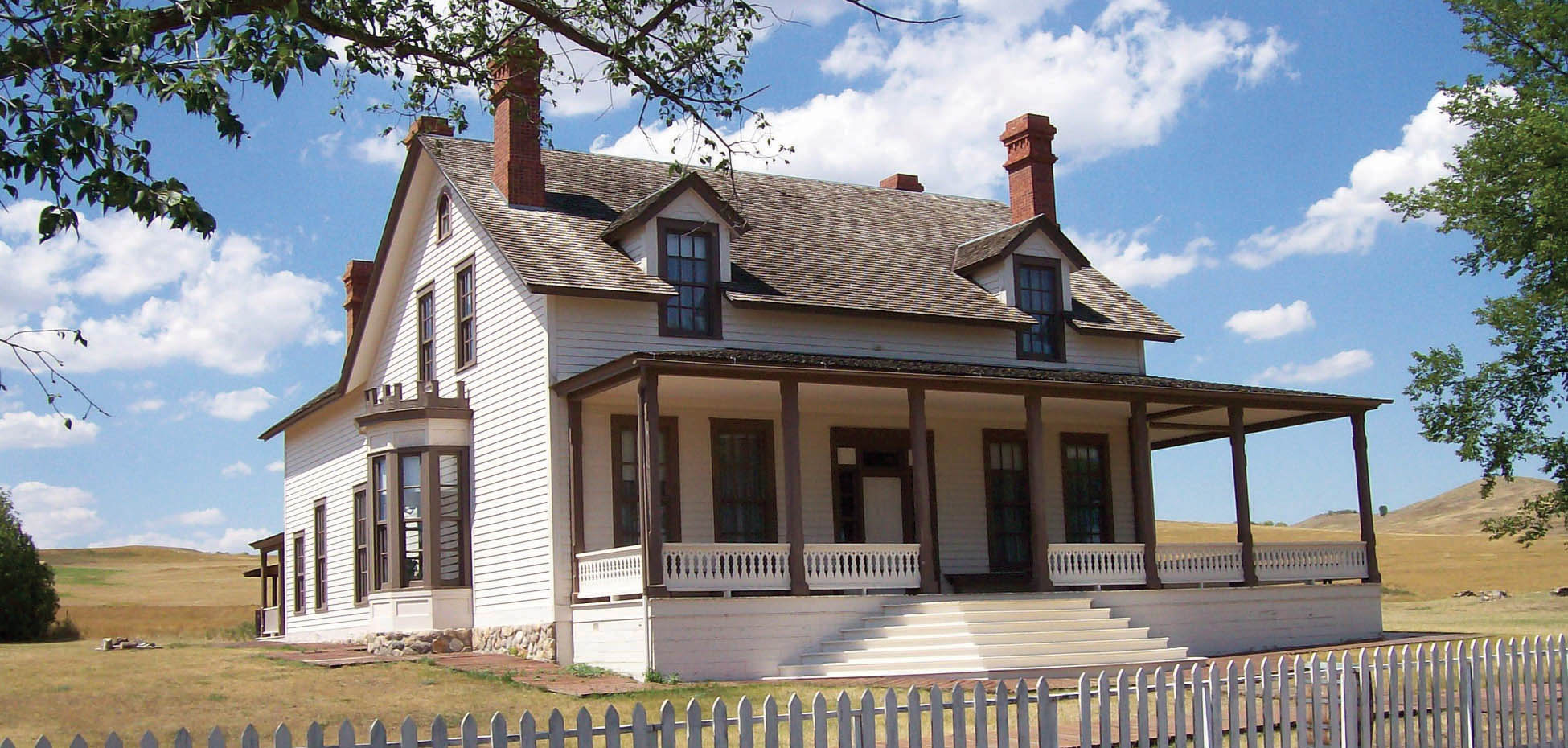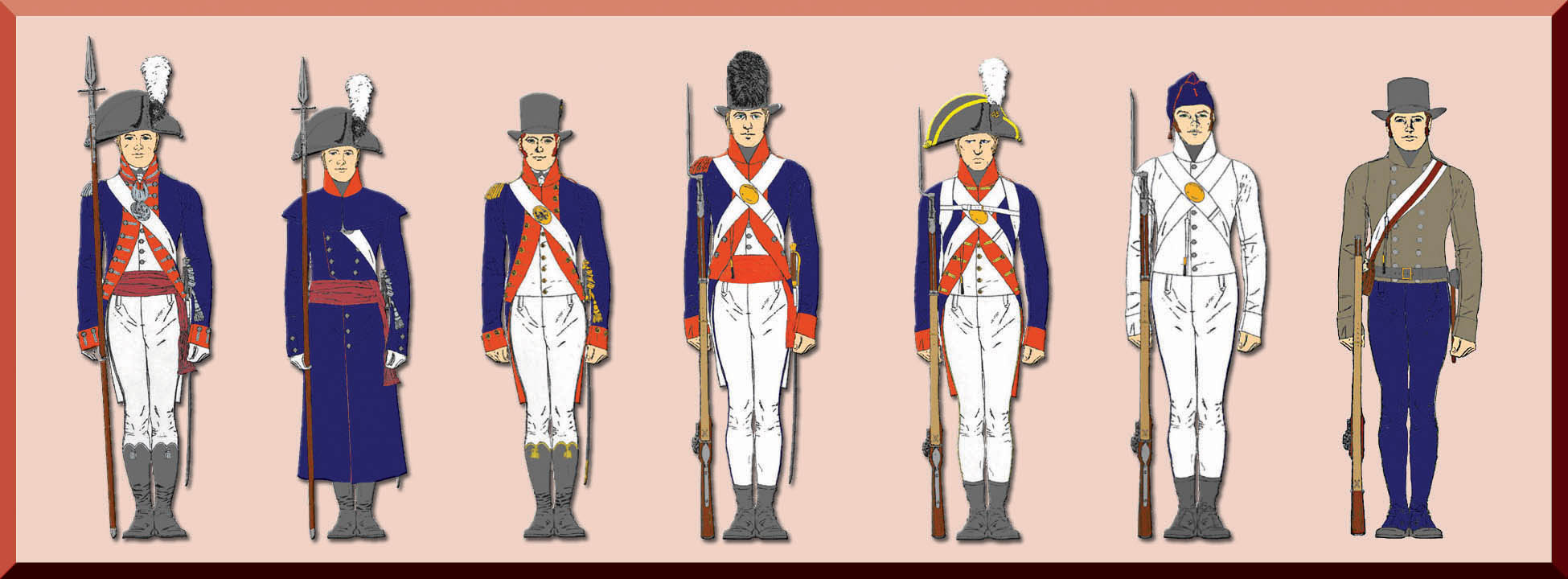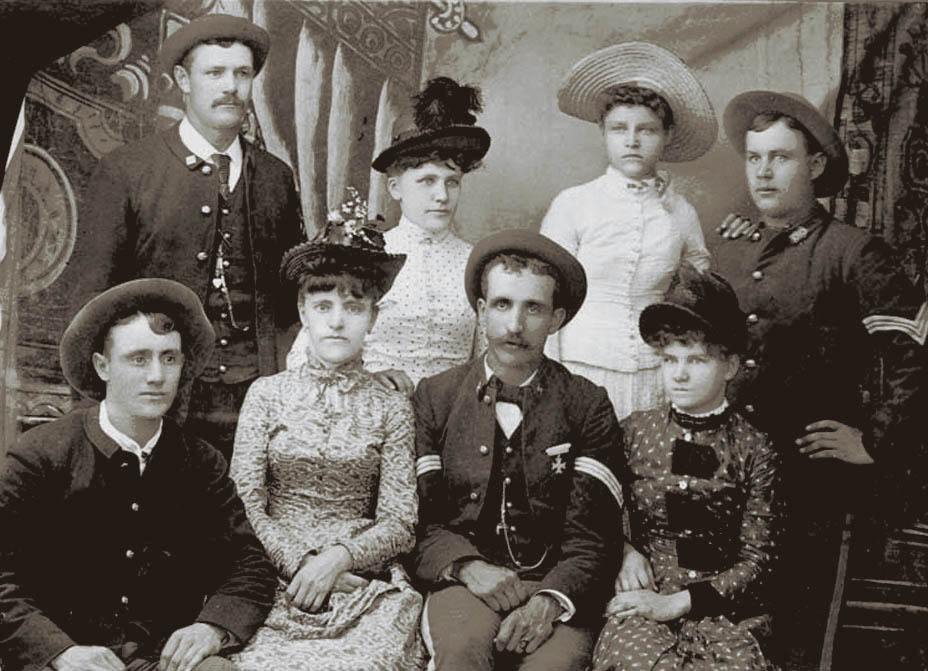Life on the frontier presented difficulties for everyone, including those living in the army forts. Danger, harsh weather, and loneliness were examples of the challenges faced by soldiers and others on the frontier.
The army was organized in a step-ladder type of structure according to rank. The higher a man’s rank, the more pay and privileges he had. Women were not allowed to serve in the frontier army.
The army leaders were called “officers.” They were educated and often came from wealthy families. The men who were not qualified to be officers were called “enlisted men.” When men enlisted to serve in the army, they had to sign up for at least five years.
Officers lived in houses or apartments with their families. Large forts, such as Fort Abraham Lincoln, had fancy housing for the officers and their wives. Very few enlisted men were married.
Officers made a great deal more money than enlisted men. For example, a colonel was paid $95 a month, while a private earned only $13 a month. Enlisted men were often immigrants from Germany or Ireland. Enlisted men who had little education could often attend school at the army post.

Figure 94. Replica of Lt. Colonel Custer’s home at Fort Abraham Lincoln. (Fort Abraham Lincoln Foundation)

Figure 95. Uniforms of the Lewis and Clark Expedition. Left to right: captain infantry, infantry officer, artillery officer, sergeant of infantry, private of artillery, private of infantry, recruit rifle uniform. (U.S. Army at www.army.mil)
Very little time was spent fighting battles. Most of the time, the soldiers were working hard at different kinds of jobs. They constructed forts, built roads and bridges, chopped wood, cleaned buildings, dug ditches, cleaned the stables, and acted as police officers to keep order. Because army life on the frontier was so hard, many soldiers quit and went home.
During their free time, the men came up with ways to entertain themselves. Card-playing was one of the most popular activities. Other games such as checkers, chess, and dice games were also played. Many soldiers liked to play outdoor games. They held contests in sports such as wrestling, running races, and baseball. Many forts had a library where the men could read books.
Making music was a favorite pastime on the army posts. The men sang or played guitars, banjos, harmonicas, fiddles, and other instruments. Dances were popular. Enlisted men and officers attended separate dances or parties. Women who worked for the army doing laundry for the soldiers and women who worked as cooks for officers’ families enjoyed the enlisted men’s dances. When there were not enough women to dance with, the men danced with each other. The man taking the place of a lady would tie a bandana around his arm to show the part he was playing.
It was easy to see what branch of the army a soldier was in by the decorations on his uniform. The uniforms were blue, but each branch had different colored piping (stripes) on the collar and sleeves. Blue was for infantry, yellow for cavalry, and red for artillery.Cannons and other large guns The caps had special symbols on the front—infantry first had a French horn and later crossed rifles; cavalry had crossed swords; and artillery had crossed cannons. The uniforms of officers were fancier and had more decorations than those of the enlisted men.
Many soldiers left their wives at home in order to spare them the hardships of frontier life, but some women did go along with their husbands to the forts. The type of living quarters a couple had depended on the rank of the husband. Some of the couples had children who also lived at the forts. Wives and children of the soldiers were called "camp followers" and did not have army privileges.
One group of women, however, held a special position and were paid for their work. These women were the laundresses. A laundressWoman who did the laundry for soldiers at a army fort was a woman who did the laundry, or clothes-washing, for the soldiers. These women received food, medical care, and other services of the fort.

Figure 96. Enlisted men and their wives at Fort Buford. (SHSND 0235-007)
The laundresses lived in a part of the post called "Suds Row.Area of army fort where laundresses lived and worked It was easy to pick out Suds Row because of the clotheslines in the area.
On wash day, the laundresses hauled and heated water and then rubbed the clothes on a washboard in the hot water. Lye soap was added to remove the dirt. Lye is a very harsh substance which burns away particles. After being scrubbed, clothes were rinsed and hung on the clotheslines to dry.
All those who lived in the army forts of the frontier faced challenges. Officers, enlisted men, wives, children, and laundresses all had times of fear, loneliness, boredom, severe weather, and difficult living conditions. These struggles were part of life in the army forts.


